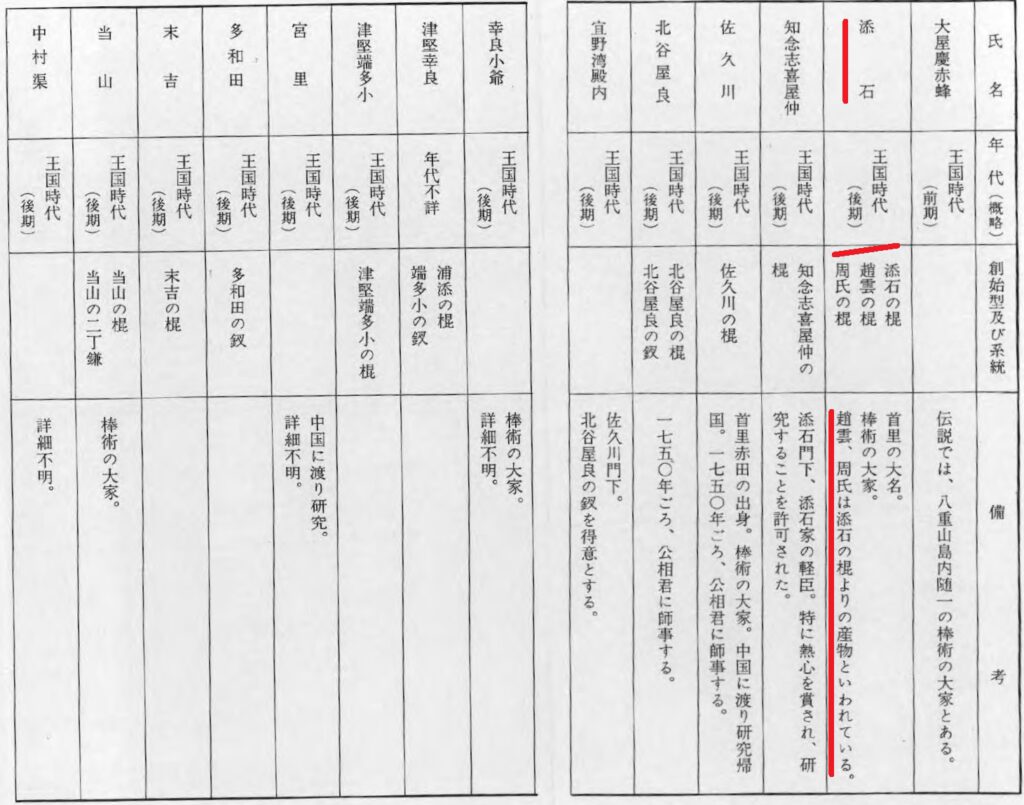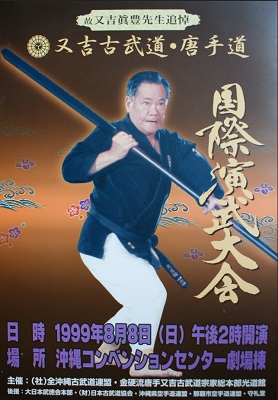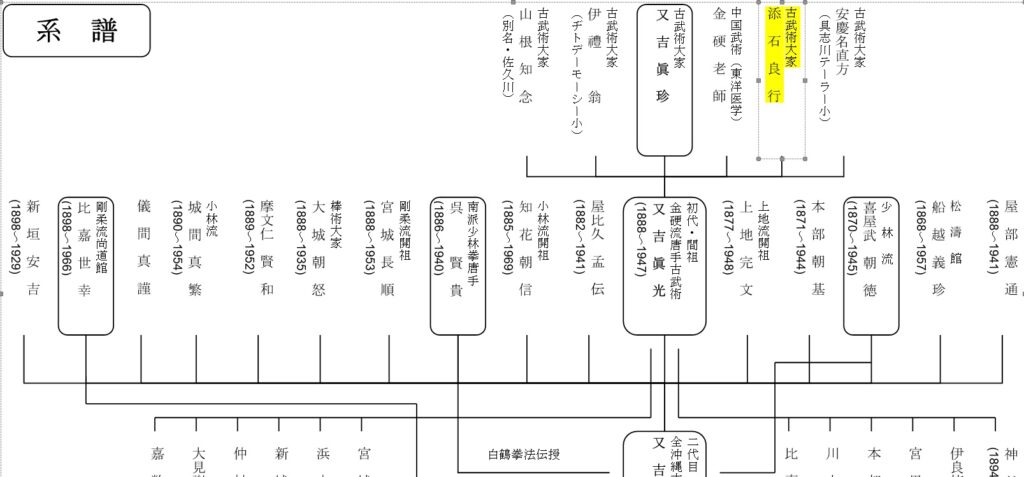A number of recent articles about Soeishi-ryū bōjutsu raised a lot of interest in bōjutsu circles. One of the schools which have a kata by the name of Soeishi is the Matayoshi Kobudō. The following is a written description of this school.
The kata of bōjutsu that are being handed down in this school [=Matayoshi Kobudō] include Shūshi no Kon, Sakugawa no Kon, Chōun no Kon, Tsuken no Kon, and Soeishi no Kon. … Soeishi no Kon was created by Soeishi Uēkata (martial arts instructor of the Ryukyu King), who was a feudal lord in Shuri about 300 years ago. Soeishi was a master of karate (tōde) and nicknamed “Shuri-te Soeishi.” (Matayoshi 1999:22-23)
In the same document, a person named Soeishi Ryōkō is positioned as a kobudō master in their lineage, while Soeishi Uēkata probably refers to Soeishi Ryōtoku as described in the research of Nakamoto Masahiro.
The first note on Soeishi in a bōjutsu context however is found thirtyfive years earlier, in Taira Shinken’s 1964 book. In fact, Taira places Soeishi at the first position of fourteen masters of kobudō:
Master Soeishi (lived more than 100 years ago): He was a feudal lord of Shuri and in particular studied various types of bōjutsu. He created the kata “Soeishi no Kon” and “Chōun no Kon.” (Taira 1964:14)
Taira planned to publish a description with photos of Soeishi no Kon at a later date, but this never actually took place.
Some time later, in 1972, Inoue Motokatsu also noted on Soeishi. Apparently, Inoue had researched the topic and was able to add some facts.
Name: Soeishi
Era: Kingdom (late period)
System of Kata: Soeishi no Kon, Chōun no Kon, Shūshi no Kon
Notes: Feudal lord in Shuri. He was a distinguished expert of bōjutsu.
“Chōun no Kon” and “Shūshi no Kon” are said to be products [made] from “Soeishi no Kon.” (Inoue 1972:4)
Inoue here states that the bōjutsu of the Soeishi school consists of Soeishi no Kon, Chōun no Kon, and Shūshi no Kon. Moreover, in Volume 1 (1972) and 2 (1974) of his comprehensive work “Ryūkyū Kobudō” he presents two versions of Soeishi no Kon.
Finally, there is Tawada Shinjun. He was a nephew of the head of the Soeishi family and his younger brother, Tawada Shinchin, has studied Soeishi-ryu bōjutsu. In 1973, Tawada described Soeishi-ryu bōjutsu as follows.
Soeishi no Kon (it consists of Chōshi no Kon and Shūshi no Kon) was handed down by the Soeishi family who held the post of the martial arts instructor of the king of Ryūkyū. It was a secret tradition that was treasured and never shown in public and only taught to the king and the eldest son of the Soeishi family. It is said to be a secret tradition left by an investiture envoy (sappōshi) to train the mind and body of successive kings. (Tawada 1973:153)
This is very telling. One important point is that the original name was Chōshi no Kon. It might have been later confused to Chōun no Kon. Moreover, Shūshi no Kon was also part of this tradition.
That is not all. As an eyewitness of the technique, Tawada also described the actual features of Soeishi-ryu bōjutsu. For example, each strike, whether shomen-uchi or yoko-uchi, ends horizontally and the bō is always tucked under the armpit. Another point is that all thrusts are done as a nuki-zuki, that is, by letting it slide through the front hand, as in the techniques of the spear.
From above features you can already see that the characteristics of Soeishi-ryu bōjutsu – that is, “royal bōjutsu” – do not correspond to the current bōjutsu as seen in Okinawan schools. Quite on the contrary, it seems that current bōjutsu on Okinawa corresponds more to simple folk bōjutsu as previously thought. Matayoshi Kobudō does not tuck the bō under the armpit, but outside the forarm. The thrusts are not sliding thrusts (nuki), and the bō is not horizontal in the end position. In Taira lineage, the bō is also not tucked under the armpit, but at placed at the hip. Most of the middle-level thrusts are standard and there are only few sliding thrusts (nuki).
While based on older traditions, most bōjutsu schools of today have forgotten just as much of the original technical features as they have newly created more recently. And so it seems there is no pure, original style in existence which can claim actual personal tradition in Soeishi-ryu bōjutsu. Well, current schools of bōjutsu have laid out their aims and understand themselves as martial arts schools, so their technique is indeed quite functional and comprehensive. But as regards an actual personal tradition, it might be “Soeishi” in name only.
© 2021, Andreas Quast. All rights reserved.



